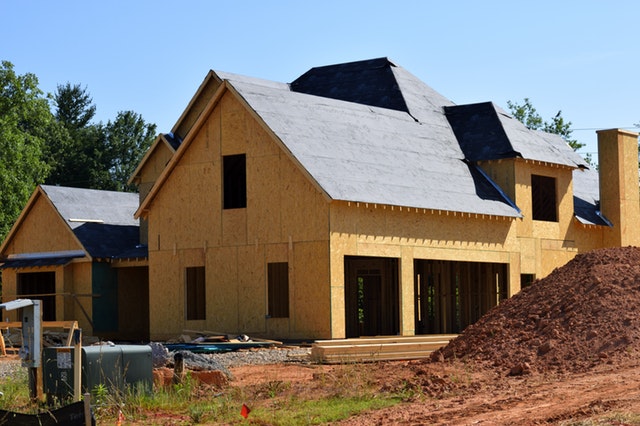New York Penthouse Sells For $238 Million – Is This A Real Estate Bubble About To Burst?
 The most expensive home sold in America, so far, was a New York penthouse that sold for $238 million in January 2019. It is on the top of a building that overlooks Central Park. The 26-story luxury condo building designed by Robert A. M Stern is nearly all sold out.
The most expensive home sold in America, so far, was a New York penthouse that sold for $238 million in January 2019. It is on the top of a building that overlooks Central Park. The 26-story luxury condo building designed by Robert A. M Stern is nearly all sold out.
Who Has That Kind Of Money?
The proud buyer of the penthouse is Ken Griffin. His net worth is estimated to be $9.6 billion. He is the founder of the Citadel hedge fund. Griffin is 50 years old. A few days before buying the NYC penthouse, he closed on a home in London that overlooks St. James Park near Buckingham Palace. For that 200-year-old home, he paid just a paltry $122 million.
Griffin’s New York penthouse is 22,000 square feet of ultra-luxury living. It sold for more than twice the amount of the second palace record-holder in America. That is a penthouse on the One57 building, which sold for $100.5 million in 2014.
Boom Or Bust?
One might think that a penthouse sale setting a new almost unfathomable record would indicate a vibrant bullish market in New York residential real estate. Well, not exactly. It did raise the median sales price of a residential sale in New York City to over $1 million from being below this amount at the end of 2018. Prior to this sale, the median price was trending lower.
Forbes reports that the current economic trends are not normal. Usually, the NYC real estate market goes up when the stock market is up. However, the NYC residential real estate is down in spite of the robust economy.
Properties selling for top-dollar at prices that are hard to imagine could be a sign of a real estate market collapse. In general, the NYC residential market has been in a steady decline over the past year. The lowest number of closings in a decade happened during the first quarter of 2019.
Investor Uncertainty
There is a general sense of uncertainty for residential buyers in NYC, where the average one-bedroom condominium sells for over $1 million. Uncertainty makes potential buyers take longer to decide on making a home purchase in the Big Apple.
Add to this uncertainty, there is the new “mansion tax” that was approved by New York City as part of its budget in April 2019. The mansion tax is now 1% on residential sales of $1 million or more that goes up to a maximum of 4.15% on homes sales of $25 million and up.
Did you just do the math? Griffin would have paid $9.87 million for the new mansion tax if he waited until April 2019 to buy his penthouse. So maybe he feels like he got a bargain by saving nearly $10 million on the purchase?
Summary
In spite of the record price for the penthouse sale in NYC, the residential market continues to soften. The new mansion tax is not going to help sales either. Unless you have money to burn, as Griffin does, it may not be the best time to invest in residential properties in NYC if you hope to make a return on your investment when selling them.
Your trusted home mortgage professional is well-informed about the market trends in your area. Be sure to set up an appointment if you are in the market for a new home or interested in refinancing your current property.

 Home price growth slowed again in May according to Case-Shiller home price indices. Home price growth slowed for the 14th consecutive month to its lowest rate in 12 years. Case-Shiller’s National Home Price Index showed 3.40 percent growth year-over-year in May as compared to April’s year-over-year reading of 3.50 percent.
Home price growth slowed again in May according to Case-Shiller home price indices. Home price growth slowed for the 14th consecutive month to its lowest rate in 12 years. Case-Shiller’s National Home Price Index showed 3.40 percent growth year-over-year in May as compared to April’s year-over-year reading of 3.50 percent. The federal government adopted the Housing and Community Development Act in 1977, and the Community Reinvestment Act (CRA) portion was designed to prompt lending institutions to provide mortgages for low- and moderate-income Americans. The underlying reasoning for the CRA was to discourage discriminatory lending practices that inhibited low-income communities and neighborhoods.
The federal government adopted the Housing and Community Development Act in 1977, and the Community Reinvestment Act (CRA) portion was designed to prompt lending institutions to provide mortgages for low- and moderate-income Americans. The underlying reasoning for the CRA was to discourage discriminatory lending practices that inhibited low-income communities and neighborhoods. Home Builder sentiment rose one point in July according to the National Association of Home Builders Housing Market Index. 2019 builder confidence in housing market condition continued to fall short of 2018 levels. July’s Housing Market Index reading of 65 was one point higher than June’s reading.
Home Builder sentiment rose one point in July according to the National Association of Home Builders Housing Market Index. 2019 builder confidence in housing market condition continued to fall short of 2018 levels. July’s Housing Market Index reading of 65 was one point higher than June’s reading. Case-Shiller’s 20-City Home Price Index for April showed further declines in home price growth with 2.50 percent year-over-year home price growth as compared to March home price growth of 2.60 percent. New York City home prices held steady month-to-month and Seattle, Washington’s home prices were unchanged year-over-year after posting 13 percent home price growth in 2018.
Case-Shiller’s 20-City Home Price Index for April showed further declines in home price growth with 2.50 percent year-over-year home price growth as compared to March home price growth of 2.60 percent. New York City home prices held steady month-to-month and Seattle, Washington’s home prices were unchanged year-over-year after posting 13 percent home price growth in 2018.